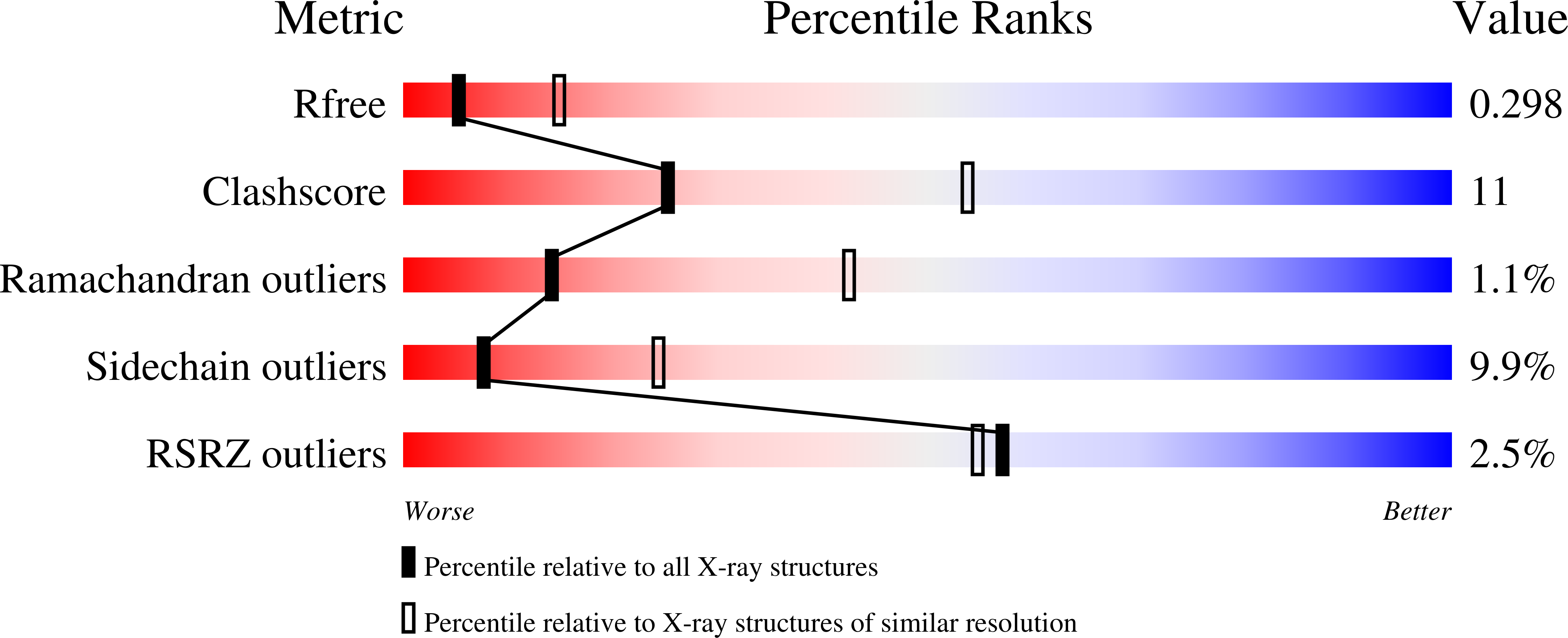A novel self-capping mechanism controls aggregation of periplasmic chaperone Caf1M
Zavialov, A.Z., Knight, S.D.(2007) Mol Microbiol 64: 153-164
- PubMed: 17376079
- DOI: https://doi.org/10.1111/j.1365-2958.2007.05644.x
- Primary Citation of Related Structures:
2OS7 - PubMed Abstract:
The chaperone Caf1M belongs to a family of ATP-independent periplasmic chaperones that together with outer membrane ushers assemble and secrete filamentous adhesion organelles in Gram-negative pathogens. It assists in folding and transport of Caf1 subunits of the F1 capsular antigen of Yersinia pestis, the microbe causing bubonic plague. In the periplasm, Caf1M prevents subunit aggregation by capping the extensive hydrophobic surface of activated Caf1. We found that subunit-free Caf1M exists predominantly as a tetramer [K(d) = (2-30) x 10(-14) M(3) in the 12-37 degrees C interval]. A 2.9 A resolution crystal structure of the Caf1M tetramer reveals that each of the four molecules contribute its subunit binding sequences (the A(1) and G(1) strands) to form an eight-stranded hetero-sandwich with a well-packed phenylalanine-rich hydrophobic core. Tetramerization protects chaperone molecules against enzymatic proteolysis. Deletions in the subunit binding motifs completely abolish tetramer assembly, suggesting that the hetero-sandwich is the main structural feature holding the tetramer together. Arresting tetramer assembly by a deletion of the N-terminal binding motif, while leaving the major subunit binding motif VGVFVQFAI (G(1) strand) intact, results in accumulation of unspecific aggregates. Deletions in the VGVFVQFAI motif abolish both tetramer assembly and aggregation, consistent with the predicted high beta-aggregation propensity for this motif. These results suggest that the packing of the aggregation-prone subunit binding sequences into the hetero-domain is a novel molecular mechanism preventing unspecific aggregation of the free chaperone.
Organizational Affiliation:
Department of Molecular Biology, Uppsala Biomedical Center, Swedish University of Agricultural Sciences, Box 590, SE-753 24 Uppsala, Sweden.














